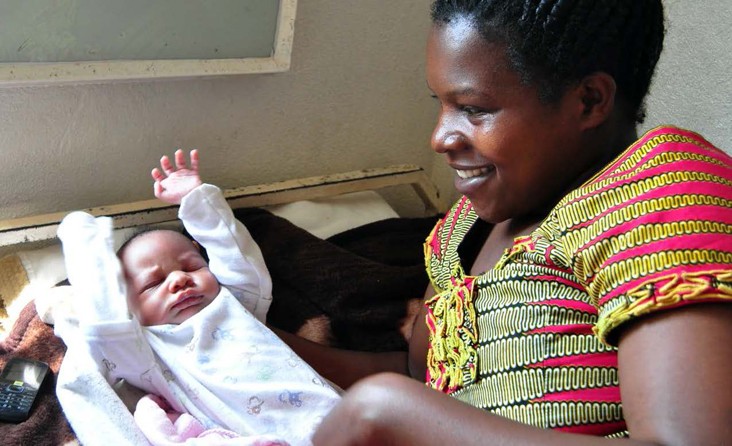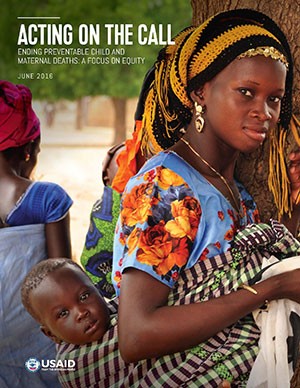Hello friends. So today is a really good day for me, the middle was busy, hectic, crazy, insane, catch my breath, where’s lunch. But the morning and the evening, the book ends on this day, have been all about global health. And I really like your line that all health is global, and I want to thank you for that, but also for being a partner. I mean, how cool that the American Academy of Pediatrics is a partner of this enterprise. And it does mean that all health is global.
Well, my day was all global health. And I started with our guest, the Minister of Health from Afghanistan, in a really extraordinary conversation about all the dimensions of what we’re trying to do, from the outcomes we want to achieve, to the inputs we have to put in, which are not just resources as you know, but are governance, science, evidence and political will. So I want to thank you again, Minister, for our meeting this morning. But thank all of you for enabling me to close my day before I go home and pack for a trip tomorrow with something very nice and something that gives us the opportunity to celebrate.

I also want to thank all of our other co-hosts, including the Global Health Council, Care, Every Mother Counts, International Medical Corps, Path, Results, Save the Children and World Vision. You all make up an amazing community of people who know how to get things done. And before we continue, I vote we do some whooping and shouting … for all of you… [applause]
So I think we all know but it never hurts us to tell our story. Anybody who wants proof that you know how to get things done and that we together are getting things done, all you have to do is look back 10 or 15 years. The global health landscape was pretty different then. And frankly, it wasn’t all that encouraging. The global community had prioritized health, and specifically maternal and child survival in the MDGs. But a few years in, we were still lagging far behind on those goals. A country like Ethiopia, which I know very well and where I lived for a long time, has a huge rural population and it didn’t appear there was gonna be a shot at reaching its target of 75 percent child mortality reduction. Nobody thought that could be done.
Today as you know, there’s a new story. While we’re still having a long road ahead, child and maternal deaths have been halved since 1990. Since 2008 alone, our collective efforts have saved the lives of 4.6 million children and 200,000 women. That’s 4.6 million children and 200,000 women. And Ethiopia, of course, reached its child mortality goal two years ahead of schedule.
But more than any specific numbers, I think what we’ve done is taken a challenge that was once too big to tackle and turned it into a solvable problem. We can measure our progress against achievable targets. We can apply interventions where the evidence tells us they will have the greatest impact. We’re building momentum that I’m confident will carry us over the finish line, a world where preventable maternal and child deaths are actually preventable.
There are a lot of different drivers behind this momentum, and there are three in particular that I would like to highlight. First is the generosity of the American people. Americans have personally contributed to the growth of organizations taking a smart and deliberate approach to saving lives around the world. Many of them are in this room this evening so you understand how much that support has meant. At USAID, we understand that too, and one of the great privileges in our work is representing American generosity abroad with our assistance. That is also a responsibility we take very seriously, which is why we’re taking every step we can to ensure that we get the greatest impact out of our investments.
So we’ve zeroed in on 25 countries where evidence shows we can have the greatest impact. Our first Acting on the Call report detailed how joint efforts in targeted countries could save 15 million children and 600,000 women by 2020. And this year’s report focuses on the impact we can make by focusing on the poorest 40 percent of each population. As it turns out, paying lip service to inclusion isn’t enough. You actually have to identify the people who are being left behind, whether it’s marginalized ethnic groups, people living in urban slums or the rural poor, and make a deliberate plan to reach them.
So that’s what we’re doing. The report shows how we’re contributing to the development of new life-saving technologies as well as proven, cost-effective interventions, and helping scale them up and applying them to the hardest-to-reach populations. In Haiti, Malawi and Mali, for example, we’re using mobile clinics to reach people in rural communities who otherwise might not get the care they need.
We’re also working to fill critical research gaps, like through one study that identified the simpler but equally effective method for treating sepsis, a leading cause of death among newborns. And we’re helping administer vaccines for deadly but preventable diseases. This is an approach that, fueled by the generosity of the American people, has made a real difference already and continues to do so.
The second driver of progress I want to mention is closely related to the support of the American people, and I cannot understate this--and that’s bipartisanship. We are fortunate to have global health champions on both sides of the aisle, who are willing to work together and with the executive branch to make sure the United States remains a global leader in maternal and child health. It’s a real privilege to have several of those champions here with us, I don’t know if all of them are here, I think many of them are coming. But thank you to Representative David Reichert, Representative Adam Smith, Representative Lois Capp and Representative Ander Crenshaw. Thank you all for your leadership and partnership.
Bipartisanship has become a hallmark of our global health work across the board. Look at PEPFAR, or the President’s Malaria Initiative. Each of these got off to an amazing start thanks to President Bush’s bold leadership. And President Obama from the start has built on and expanded them, ensuring a sustained effort and continued progress.
And now, as we look ahead to a new administration in January, we can be certain that the progress we are making in global health--whether it’s fighting HIV/AIDS and malaria or saving the lives of women in children everywhere--can continue into the future. And that’s because of the overwhelming bipartisan support for what we’re doing.
The third thing that has been a key driver of success is political leadership from across the globe. There are leaders from countries around the world who have put real political capital behind efforts to reduce mortality. This is absolutely critical to long-term success.
Because what happens is other leaders start to look around and see what these pioneers are doing, and they start to see that investing in health is a smart investment. In fact, the Lancet Commission has shown that health investments yield a return on investment between 9 and 20 times that much in economic and social benefits.
They see the huge benefits health leadership can bring for their citizens. How better health can lead to more productivity and less poverty. And they see that saving lives isn’t too bad for politics, either.
Going forward, political leadership from countries around the world will be even more important to sustaining our progress. That’s why I’m thrilled that in 2017, the Government of Ethiopia will host an international Call to Action event to continue this momentum. We are grateful for their continued leadership, and I know that the USAID team is looking forward to joining them in Addis Ababa next year to take stock of progress and chart a path to the future.
I know our colleagues in Ethiopia share our excitement, and I want to thank our honored guest from the Ethiopian Embassy, Mr. Elias Melaku Feleke.
To close, I’ll just say thanks again, to all of you, for being here. Thank you for setting an example and leading the way. Thank you for transformative change, even when it was hard. I hope you see that your efforts are paying off, and that you can count on USAID as a partner now and in the future.








Comment
Make a general inquiry or suggest an improvement.